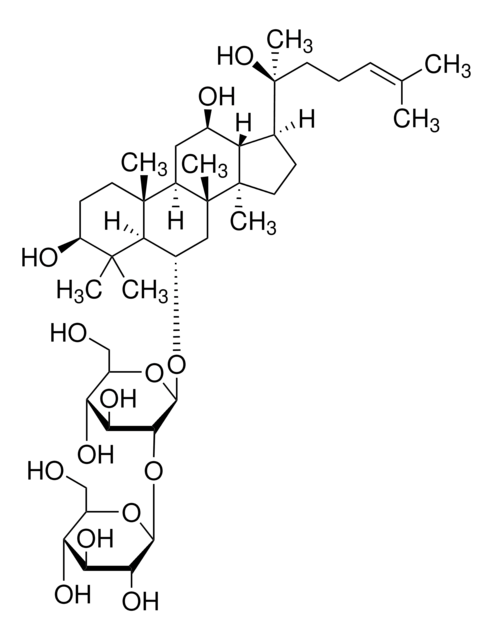1.03115
1,4-Dioxane
EMPLURA®
Synonyme(s) :
1,4-Dioxane, Glycolethylether, 1,4-Diethylene dioxide, 1,4-Dioxacyclohexane
About This Item
Produits recommandés
Pression de vapeur
41 hPa ( 20 °C)
Niveau de qualité
Gamme de produits
EMPLURA®
Pureté
≥99% (GC)
Forme
liquid
Température d'inflammation spontanée
300 °C
Puissance
5200 mg/kg LD50, oral (Rat)
7600 mg/kg LD50, skin (Rabbit)
Limite d'explosivité
1.7-25.2 % (v/v)
Impuretés
≤0.005% Peroxide (as H2O2)
≤0.01% Free acid (as CH3COOH)
≤0.1% Water
pH
6-8 (20 °C, 500 g/L in H2O)
Point d'ébullition
101.5 °C/1013 hPa
Pf
12 °C
Température de transition
flash point 11 °C
Densité
1.03 g/cm3 at 20 °C
Température de stockage
2-30°C
InChI
1S/C4H8O2/c1-2-6-4-3-5-1/h1-4H2
Clé InChI
RYHBNJHYFVUHQT-UHFFFAOYSA-N
Catégories apparentées
Description générale
Application
- Occurrence of 1,4-dioxane in drinking water of China and its ecological and human health risk: An examination of the prevalence of 1,4-dioxane in China′s drinking water, with an assessment of the associated ecological and human health risks, relevant for researchers and policymakers focused on public health and environmental safety (Wang et al., 2024).
- Adsorption Behavior and Kinetics of 1,4-Dioxane by Carbon Aerogel: This research discusses the effectiveness of carbon aerogel in the adsorption of 1,4-dioxane, providing valuable data on adsorption kinetics and behavior, useful for material scientists and chemists working with advanced materials (Lu et al., 2024).
- Photosensitized covalent organic framework as a light-induced oxidase mimic for colorimetric detection of uric acid: This innovative approach using a framework that could potentially be adapted for 1,4-dioxane detection underscores the intersection of material science and analytical chemistry, which could intrigue researchers developing new analytical methods (Wang et al., 2024).
Remarque sur l'analyse
Identity (IR): conforms
Free acid (as CH₃COOH): ≤ 0.01 %
Density (d 20 °C/ 4 °C): 1.032 - 1.034
Peroxide (as H₂O₂): ≤ 0.005 %
Water: ≤ 0.1 %
Stabilized with about 25 ppm 2,6-Di-tert-butyl-4-methylphenol (BHT)
Informations légales
Mention d'avertissement
Danger
Mentions de danger
Conseils de prudence
Classification des risques
Carc. 1B - Eye Irrit. 2 - Flam. Liq. 2 - STOT SE 3
Organes cibles
Respiratory system
Risques supp
Code de la classe de stockage
3 - Flammable liquids
Classe de danger pour l'eau (WGK)
WGK 3
Point d'éclair (°F)
51.8 °F - closed cup
Point d'éclair (°C)
11 °C - closed cup
Certificats d'analyse (COA)
Recherchez un Certificats d'analyse (COA) en saisissant le numéro de lot du produit. Les numéros de lot figurent sur l'étiquette du produit après les mots "Lot" ou "Batch".
Déjà en possession de ce produit ?
Retrouvez la documentation relative aux produits que vous avez récemment achetés dans la Bibliothèque de documents.
Les clients ont également consulté
Notre équipe de scientifiques dispose d'une expérience dans tous les secteurs de la recherche, notamment en sciences de la vie, science des matériaux, synthèse chimique, chromatographie, analyse et dans de nombreux autres domaines..
Contacter notre Service technique








